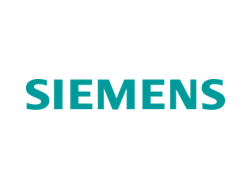What could a Hydrogen-embedded Water Company look like alongside a circular economy from Biogas?
Challenge
Anaerobic Digestion (AD) is widely used in the UK water industry, processing around 66% of the UK's 1.7 million tonnes of dry sewage sludge annually. This results in an estimated 500 million m³ of biogas annually that can be used for heating and power generation.
NWL’s Bran Sands Advanced Digestion Facility produces 75,000 MWh of biomethane per year, which is enough to heat 4,000 homes. This biomethane is derived from 30,000 tonnes of treated sewage sludge processed annually, including:
- 12,500 tds/y of indigenous sludge from the adjacent effluent treatment works
- 6,500 tds/y of liquid imports
- 11,000 tds/y of cake imports from satellite works
However, conventional biogas-to-energy conversion requires water and electricity, and produces CO₂ emissions, which may be emitted to the air rather than captured.
Proposal
What if an innovative and scalable technology could convert biomethane into hydrogen and avoid CO₂ emissions entirely?
Imagine boosting business value by producing hydrogen using low-cost surplus renewable energy. Imagine using the produced hydrogen to power HGV EV fleets with zero-emission energy, while the water generated from hydrogen use is captured for non-household applications. Imagine capturing and converting CO₂ emissions into valuable products for local industrial applications.
During the workshop, we will explore the techno-economic opportunity to produce hydrogen at Bran Sands for use in EV fleet charging, utilising biomethane as the feedstock. Additionally, we will explore the opportunity to convert CO₂ into graphene, a valuable material with diverse industrial applications that may be used within the Teesside Industrial Cluster.
The design challenge will identify solution requirements, explore existing solutions and their shortcomings, and assess the feasibility of developing a new solution concept. This will involve engaging with current and future partners, as well as the wider supply chain, to explore the opportunity.
Target Objectives
- Explore a commercial model that utilises biomethane as a feedstock for hydrogen production, accelerating the Net Zero transition across the Teesside Industrial Cluster, where Bran Sands is strategically located but is also transferable to other Water Companies as a template for their Hydrogen / Net Zero journeys.
- Explore the opportunity to capture the water released from hydrogen utilization to support non-household consumers, aligning with AMP8 regulatory targets to achieve a 20% reduction in industrial water consumption. This approach not only optimizes biogas use but also creates a circular, decarbonized energy system, positioning Bran Sands as a flagship for sustainable energy transformation in the UK.
- Explore the opportunity to capture and convert CO₂ into graphene as a byproduct – one that could be commercialised to accelerate Net Zero in construction, and integrating graphene into concrete for AMP 8 infrastructure projects to enhance durability, reduce carbon footprints from capital projects, and drive sustainable innovation across industries.
Target Audience
To support the Biogas-to-Hydrogen Conversion discussions the target audience should include a diverse mix of technical, commercial and regulatory stakeholders who can drive innovation, feasibility, and implementation. It would appeal to UK Water companies' teams responsible for Net Zero, Sustainability and Biogas production, as well as other technology partners, innovators with solutions and technologies that could be adapted to meet the challenge.
What will we be proposing to do?
- Gain an understanding of NWL’s current waste to power process through a day in the life of Brans Sands / Howden AD Plants as well as exploring other Water company sludge treatment processes in current operation.
- Identify where could Hydrogen fit in the water industry as it is now and introduce the two chosen hydrogen technologies and why they have been selected for this event.
- Value discovery the potential market offerings: Use Cases, Hydrogen, Carbon, Clean power and Pure water.
- Identify Ecosystems/partnerships that could support and enrich this technology.
- Brainstorm fiscal & delivery models and prepare a pitch for the NWL ELT.
| Registration has now closed |

